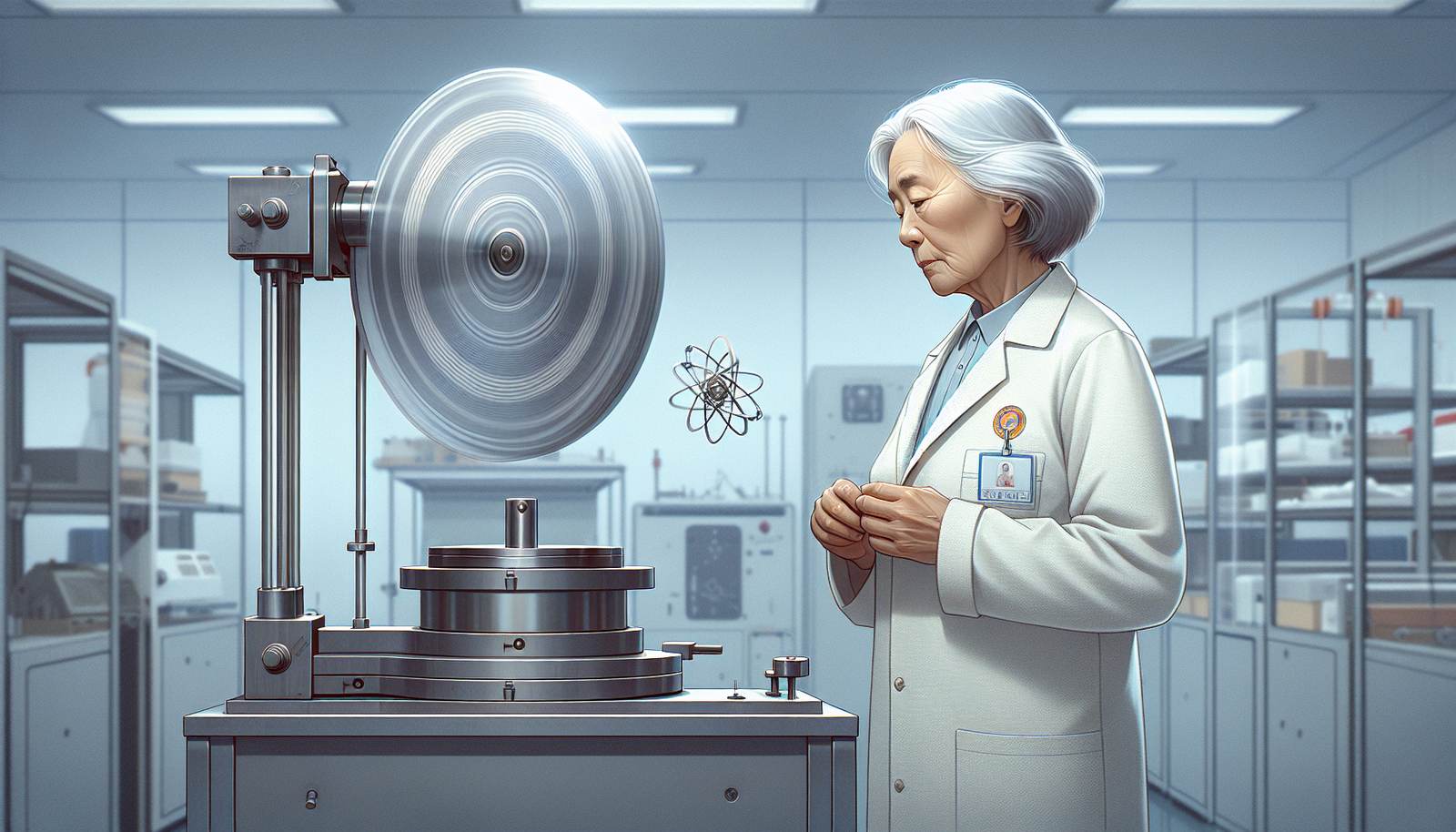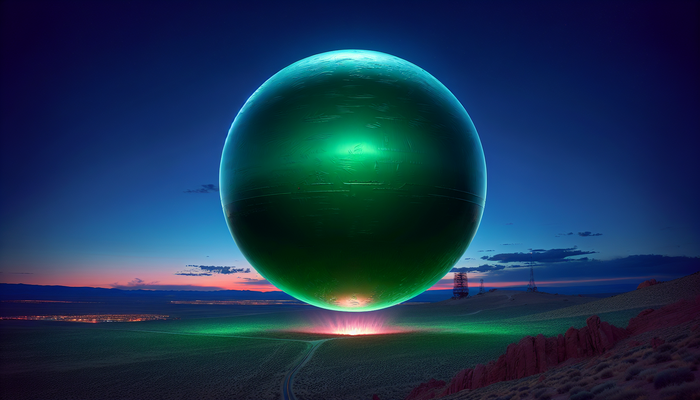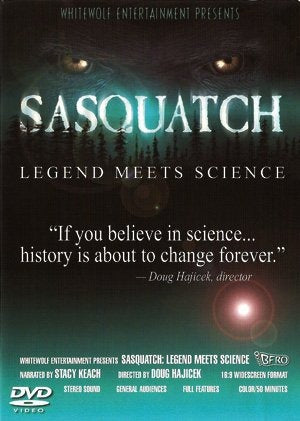Exploring the Reality of Antigravity Technology

By Sanjay Kapoor, Ufologist
Picture this: sleek speeder bikes weaving through dense forests, massive starships hovering silently over cities, individuals floating effortlessly with personal devices. Science fiction paints a vivid picture of a future unburdened by gravity's relentless pull. But what if this wasn't just fiction? The concept of antigravity technology, the ability to neutralize or even reverse the force that holds us to the ground and dictates the dance of planets, has long captivated the human imagination. It’s the ultimate brass ring, a technology promising to rewrite the rules of transportation, energy, and space exploration.
But antigravity isn't just lifting things. A helicopter battles gravity with brute force; a balloon uses buoyancy. True antigravity, the kind we're talking about, means becoming free from gravity's influence altogether. It’s a notion that sits at a fascinating crossroads of hard physics, historical quests, whispers of military secrets, and the persistent mystery of unidentified aerial phenomena (UAP). Is it merely a fanciful dream, a closely guarded reality, or something stranger still, lurking in the gaps of our understanding? Let's explore the scientific frontiers, the historical breadcrumbs, and the modern-day mavericks chasing this elusive prize.
Defining the Impossible: The Scientific Frontier
Before we can dream of defying gravity, we need to understand the adversary. Isaac Newton gave us the first comprehensive picture: gravity as a universal force pulling objects together – think of that apocryphal apple. Early science fiction often imagined simply switching off or reversing this pull. Simple, right? Well, not quite.
Enter Albert Einstein and his theory of general relativity, which revolutionized our understanding. Gravity, in this view, isn't a force transmitted across space like magnetism; it’s a property of spacetime itself. Massive objects warp the fabric of spacetime, and other objects follow these curves, which we perceive as gravitational attraction. Imagine a bowling ball on a trampoline – it creates a dip, and marbles rolling nearby curve towards it. To achieve antigravity within this framework, you'd need to somehow flatten that curvature, shield against it, or, even more radically, create an "anti-curve" – a hill instead of a dip. General relativity doesn't easily allow for this under normal circumstances.
The equations do leave a theoretical loophole: negative mass. If matter with negative mass existed, general relativity and even Newtonian physics suggest it could produce a repulsive gravitational field. Sounds promising, until you look closer. The theoretical physicist Hermann Bondi explored this in 1957, pointing out the utterly bizarre consequences. Negative mass would "fall" towards positive mass (because while the force is repulsive, negative mass accelerates opposite to the force applied), while positive mass would fall away from negative mass. Put a positive and negative mass particle near each other, and they'd bizarrely chase each other off into infinity, a runaway pair generating kinetic energy seemingly from nothing (though the total energy remains zero due to the negative kinetic energy of the negative mass). Fascinating, yes. Practical? Not with anything known to exist. The Standard Model of particle physics, our current inventory of fundamental particles and forces, has no place for negative mass. Dark matter seems to have positive mass (we infer its existence from its gravitational pull), and dark energy, while causing cosmic acceleration, operates through a combination of energy density and negative pressure within the framework of general relativity, not through simple negative mass repulsion.
The other great hope lies in unifying gravity with the other fundamental forces – electromagnetism and the strong and weak nuclear forces. This quest for a "theory of everything," often involving complex ideas like string theory or loop quantum gravity, aims to describe gravity at the quantum level. Early unification attempts sometimes hinted at hypothetical particles (like the graviton to carry gravity, or the graviphoton in theories like supergravity) that might mediate gravity or related forces. Some theories even tentatively suggested antimatter might interact differently with gravity, perhaps experiencing repulsion. However, these ideas remain highly speculative, and we still lack a complete, experimentally verified theory of quantum gravity. Tapping into quantum phenomena like vacuum fluctuations or zero-point energy as a potential path to antigravity is another theoretical avenue, but it remains firmly on the speculative edge of physics, awaiting breakthroughs that could fundamentally alter our understanding of spacetime itself.
Echoes from the Past: Early Ventures into Gravity Control
While the physics seems forbidding, the ambition to conquer gravity has fueled research efforts for decades, particularly during the tense, technologically charged atmosphere of the early Cold War. The 1950s saw a surprising surge of interest in the United States, buzzing with terms like "gravity control," "baricentric," "counterbary," and, perhaps most intriguingly, "electrogravitics." The goal, openly discussed in aviation journals and even newspapers, was ambitious: investigate the fundamental nature of gravity and figure out how to manipulate it for propulsion. As one 1956 Aero Digest article put it, "Anti-gravity Booming."
Thomas Townsend Brown and the Biefeld-Brown Effect
At the heart of much of this early buzz was Thomas Townsend Brown. A curious figure who began experimenting with high voltages while still in high school, Brown reported that vacuum tubes seemed to change weight depending on their orientation. By the 1920s, he developed devices he called "gravitators" – essentially large, asymmetric capacitors subjected to high voltages. Brown insisted these devices demonstrated a true antigravity effect, generating a net thrust. He patented his ideas (a British patent was granted in 1928) and relentlessly pitched them to aerospace companies and the military, coining the term "Biefeld-Brown effect."
Brown's claims generated significant attention, and reports from the era suggest companies like Bell, Boeing, Convair, and Lockheed were looking into "electrogravitics." However, the scientific consensus eventually converged: the thrust Brown observed was almost certainly due to electrohydrodynamics – the movement of ionized air particles ("ion wind") pushed by the strong electric fields. Experiments showed these "Ion Lifters" work in air but produce negligible or no thrust in a vacuum, fundamentally undermining the antigravity claim. Yet, the allure of electrogravitics persists, especially in fringe circles and conspiracy theories, sometimes even linked to the alleged propulsion systems of advanced aircraft like the B-2 stealth bomber – claims fueled by speculative interpretations of its design features mentioned in a 1992 Aviation Week article regarding its charged leading edge.
Institutional Research and the Gravity Research Foundation
Beyond Brown's work, there was genuine institutional interest. From 1955 to 1974, several US government programs funded research explicitly aimed at gravity control, seemingly flying in the face of general relativity's constraints. The Aeronautical Research Laboratories (ARL) at Wright-Patterson Air Force Base hosted a significant program investigating gravitational and unified field theories, involving notable physicists and contributing tangibly to the "golden age" of general relativity research, even if its antigravity goals remained unrealized (or, as one former scientist bluntly put it, "rubbish"). Simultaneously, the Glenn L. Martin Company established the Research Institute for Advanced Study (RIAS), assembling top-tier talent explicitly to tackle advanced propulsion, including, as reported by journalist Ansel Talbert, contracting with European theorists like Pascual Jordan and Burkhard Heim. These efforts suggested a serious, if speculative, push to find a breakthrough.
This era also saw the establishment of the Gravity Research Foundation in 1948 by businessman Roger Babson. Initially driven by the somewhat eccentric goal of shielding against gravity, the foundation evolved into a respected entity fostering a better understanding of gravity, famously holding conferences and running an essay competition whose winners include Nobel laureates. It served as a unique hub, mobilizing resources and encouraging physicists to tackle the gravity problem. However, the overt funding for many of these ambitious military projects seemingly dried up after the Mansfield Amendment in 1973, which restricted Defense Department spending to research with clear, near-term military applications. This official cessation, however, only fueled speculation that the quest hadn't ended, but had simply gone deeper underground, into the classified world.
Hidden Skies and Suppressed Secrets: The Realm of Classified Research and Whistleblower Claims
The Case of Dr. Ning Li
The story of antigravity research takes a sharp turn towards secrecy with the tale of Dr. Ning Li. A brilliant Chinese-American physicist working at the University of Alabama in Huntsville, Li, alongside colleague Douglas Torr, published compelling theoretical papers in the early 1990s. Their work proposed a novel method to potentially counteract gravity using rotating ions within a specially prepared high-temperature superconductor. They theorized that aligning the quantum spins of these ions could generate a repulsive gravimetric field.
Putting theory into practice, Li's team published a peer-reviewed paper in 1997 reporting "anomalous weight loss" – a tiny but measurable reduction (up to 2.1%) in the weight of objects suspended above their spinning superconductor device. While far from levitation, it was a tantalizing experimental hint that their approach might hold water. This work attracted significant attention, promising world-changing applications if scalable.
In 1999, Li left the university to found AC Gravity LLC, aiming to commercialize the technology. Her work was clearly taken seriously; in 2001, the company received a Department of Defense grant worth nearly half a million dollars for further research. And then... silence. Dr. Li stopped publishing academic papers. AC Gravity's business license was renewed for years, but no public record of further work emerged. This abrupt withdrawal from the public scientific sphere spawned a decade of intense online speculation and conspiracy theories – had she been silenced? Had she defected to China with revolutionary secrets?
The truth, uncovered by recent journalism interviewing her son, George Men, is both more mundane and more profound. Dr. Ning Li never disappeared, nor did she defect (though Chinese officials did unsuccessfully try to recruit her in 2008). She continued her antigravity research, but under the veil of government secrecy. After receiving the DoD funding, her work became classified, eventually reaching top-secret status, legally barring her from publishing any findings. She worked at the US Army's Redstone Arsenal in Huntsville until 2014. Tragically, her research career ended abruptly when she was struck by a car, suffering severe brain damage that led to Alzheimer's disease. She passed away in 2021, cared for by her son.
The confirmation that a physicist conducting promising antigravity research received DoD funding and subsequently worked on classified programs for over a decade lends significant credence to the idea that antigravity is not just a historical footnote but potentially an area of ongoing, hidden research. What breakthroughs, if any, Dr. Li achieved behind that wall of secrecy remains completely unknown.
UAP and Whistleblower Claims
This air of secrecy inevitably intersects with the persistent phenomenon of UAP. Many reported sightings involve objects exhibiting flight characteristics that defy conventional propulsion – silent hovering, instantaneous acceleration, right-angle turns at hypersonic speeds. For decades, these observations have fueled speculation about extraterrestrial technology, often invoking antigravity as the only plausible explanation. More recently, high-profile whistleblowers like former Pentagon official Luis Elizondo and former intelligence officer David Grusch have made extraordinary claims, alleging the US government has recovered non-human craft and is actively trying to reverse-engineer their advanced propulsion systems, explicitly mentioning antigravity.
These claims remain highly controversial. The Pentagon's All-Domain Anomaly Resolution Office (AARO) concluded in a 2024 report that it found no verifiable evidence supporting claims of extraterrestrial technology or government reverse-engineering programs. Yet, the undeniable reality of documented UAP encounters by credible military witnesses, coupled with the historical context of classified antigravity research like Dr. Li's, creates fertile ground for speculation. Could some UAP sightings be tests of classified, human-made antigravity craft?
This ties into the notion of "classified physics" or "classified math." Could fundamental breakthroughs related to gravity manipulation be kept secret? Historically, while the technological application of physics (like building a nuclear bomb) is routinely classified, classifying the underlying fundamental principles is much harder, as science tends to advance globally. However, proponents argue that truly paradigm-shifting discoveries with immense military implications could warrant such measures, especially if the path to discovery was complex and not easily replicated. The secrecy surrounding Dr. Li's work certainly demonstrates that research related to antigravity can disappear behind classification walls.
Modern Mavericks and Emerging Concepts: Pushing the Boundaries of Physics
Dr. Charles Buhler and Exodus Propulsion Technologies
While whispers of classified projects persist, the public-facing quest for antigravity continues, often driven by individuals challenging mainstream physics. Enter Dr. Charles Buhler, a former NASA electrostatics expert and co-founder of Exodus Propulsion Technologies. Buhler and his team claim to have built and tested a revolutionary "propellantless propulsion drive." According to Buhler, their device generates thrust using only electric fields, seemingly tapping into a "New Force" that operates outside our current understanding.
He explains the mechanism involves creating an asymmetry in electrostatic pressure or a divergent electrostatic field, which somehow imparts a net force on the device without expelling any mass – appearing to violate Newton's Third Law of Motion. Buhler presented his findings at the Alternative Propulsion Energy Conference (APEC), a forum known for exploring unconventional ideas. He reports a dramatic progression in their experiments, claiming their latest prototypes generate enough thrust to counteract Earth's gravity (achieving "Unity").
This is an extraordinary claim, reminiscent of previous "impossible drives" like the EmDrive, which generated excitement based on initial thrust measurements but were later attributed to experimental errors or subtle conventional effects. Buhler acknowledges the skepticism, stating the crucial next step is independent verification via testing in the vacuum of space. If validated, the Exodus drive would be utterly transformative, potentially enabling fuel-less travel across the solar system in days or weeks, rather than months or years. A trip to the Moon in under three hours? Mars in six days? These are the staggering implications Buhler suggests, revolutionizing not just space travel but all forms of transportation.
Antimatter and Other Frontiers
Meanwhile, mainstream physics continues to probe gravity's mysteries, albeit through different avenues. At CERN, experiments like ALPHA-g, GBAR, and AEgIS are painstakingly attempting to measure how antimatter interacts with gravity. Does it fall down like normal matter, as overwhelmingly predicted by theory, or does it fall up, exhibiting true gravitational repulsion? A definitive answer is expected soon. While an "upward fall" would be a monumental discovery, the sheer difficulty and danger of producing and handling significant amounts of antimatter make it an unlikely candidate for practical antigravity technology in the foreseeable future.
Other frontiers involve manipulating matter and energy in novel ways. Researchers are exploring metamaterials – artificially structured materials with properties not found in nature – to see if they can interact with electromagnetic or even potentially gravitational fields in unprecedented ways. Could they locally warp spacetime? It's highly speculative, relying on theories yet to be proven. Similarly, plasma physics investigates the unique electromagnetic properties of the fourth state of matter, exploring whether controlled plasmas could influence gravitational interactions, though this research is still in its infancy.
It's crucial, however, to distinguish these pursuits from established technologies sometimes confused with antigravity. Artificial gravity, envisioned for spinning space stations, uses inertia (centrifugal force) to simulate weight, not cancel gravity. Astronaut training flights using parabolic arcs (the infamous "vomit comet") achieve brief periods of weightlessness through freefall, again, not by negating gravity. And while magnetic levitation (maglev) allows trains to float, it's simply balancing gravity with magnetic repulsion. Even recent discoveries of novel magnetic levitation using spinning magnets, initially puzzling, were ultimately explained within known physics – a testament to how easily unconventional forces can mimic the appearance of antigravity.
Antigravity in Culture and Concept: From Sci-Fi Staple to Real-World Applications (Beyond True Antigravity)
The sheer power of the antigravity concept resonates deeply in our culture. It's a cornerstone of science fiction, the ultimate technological leap that unshackles humanity (or aliens) from planetary bonds. From the floating landspeeders of Star Wars to the hovering robots in the Fallout video game universe or the sophisticated gravity manipulation seen in Halo, antigravity fuels narratives of freedom, exploration, and advanced power. It represents the mastery of a fundamental force, enabling stories that would otherwise be impossible.
This cultural embedding sometimes leads to the term "antigravity" being applied loosely to real-world technologies that achieve impressive feats of левитация or flight through conventional, albeit advanced, means. Consider devices based on the Biefeld-Brown effect – the "Ion Lifters" or "Ionocraft." While they use electric fields to move air and generate lift, appearing to float silently without moving parts, they rely on electrohydrodynamics, not gravity manipulation. Or take the Volonaut Airbike, a Polish design inspired by Star Wars speeders. It achieves remarkable speed and maneuverability using powerful jet engines and advanced lightweight materials like carbon fiber – impressive engineering, but entirely reliant on aerodynamic and propulsive forces, not antigravity. These examples show how the idea of antigravity captures our imagination, even when the reality involves different physics.
But what if true antigravity were achieved? The implications are almost difficult to fully grasp. Transportation would be utterly transformed – silent, efficient vehicles hovering above roads or terrain, perhaps even personal levitation devices. Space exploration would enter a new era. Launching payloads from Earth would become vastly cheaper and safer without the need for massive, propellant-heavy rockets. Interplanetary travel could become routine, with transit times slashed dramatically, as suggested by Buhler's theoretical calculations for his drive. Landing on moons and planets could involve gentle hovering descents, eliminating complex landing systems and mitigating risks like lunar dust contamination.
Beyond travel, the applications could extend to construction (effortlessly lifting massive structures), industry, and inevitably, military domains. The prospect of silent, undetectable craft capable of extreme maneuvers has always been a driver of military interest, feeding speculation about classified vehicles like the rumored TR-3B "Black Manta," an alleged triangular reconnaissance craft supposedly using a mercury-based plasma engine accelerated by nuclear energy to create an antigravity effect – though its existence remains firmly unconfirmed and heavily debated within aviation and UAP circles. A truly propellantless drive, relying only on an energy source, would fundamentally change the logistics and energy demands of our entire civilization. This revolutionary potential, touching every aspect of life, is precisely why the quest, despite its immense challenges and speculative nature, persists.
From Bigfoot to UFOs: Hangar 1 Publishing Has You Covered!
Explore Untold Stories: Venture into the world of UFOs, cryptids, Bigfoot, and beyond. Every story is a journey into the extraordinary.
Immersive Book Technology: Experience real videos, sights, and sounds within our books. Its not just reading; its an adventure.


























